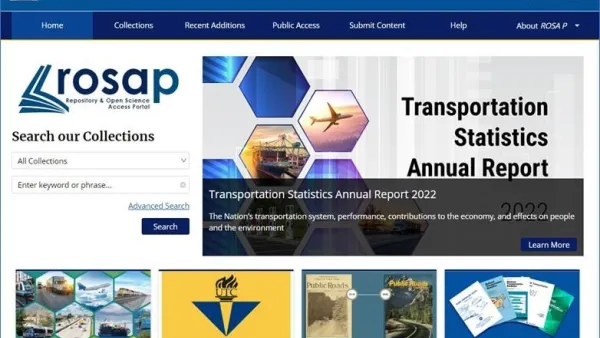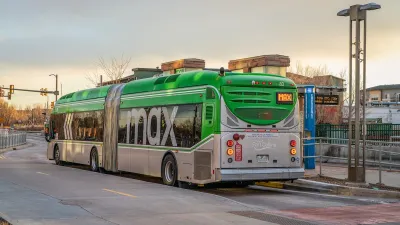The real estate market has been transformed in cites that added bus rapid transit in the past decade, according to a new study presented this week at the Transportation Research Board Annual Meeting.
According to Angie Schmitt, "a new study [PDF] by Arthur C. Nelson of the University of Arizona and released by Transportation for America finds that BRT lines can indeed shape real estate and attract jobs…" The big caveat of the study's findings: those benefits are possible "if the projects are done right."
The study "found that in Pittsburgh, Cleveland, Las Vegas, Los Angeles, and other cities with high-quality BRT lines, real estate near the routes tends to be valued at a premium and is capturing an increasing share of development," reports Schmitt.
Schmitt also provides a dispatch from Nelson's presentation at the Transportation Research Board Annual Meeting earlier this week. There, Nelson described the effect of BRT on development and real estate as transformational, and likely to continue provide benefits in the future.
The catch, however, is that merely rebranding a bus route as BRT isn't enough: "to reap the benefits of BRT investment, Nelson says cities must ensure the systems are designed and operated at a high standard….In addition to high frequencies, BRT routes that affect development have features like dedicated lanes, level boarding, off-board fare collection, and signal priority for buses at intersections…"
FULL STORY: New Evidence That Bus Rapid Transit Done Right Spurs Development

Planetizen Federal Action Tracker
A weekly monitor of how Trump’s orders and actions are impacting planners and planning in America.

San Francisco's School District Spent $105M To Build Affordable Housing for Teachers — And That's Just the Beginning
SFUSD joins a growing list of school districts using their land holdings to address housing affordability challenges faced by their own employees.

The Tiny, Adorable $7,000 Car Turning Japan Onto EVs
The single seat Mibot charges from a regular plug as quickly as an iPad, and is about half the price of an average EV.

San Diego Votes to Rein in “Towering” ADUs
City council voted to limit the number of units in accessory buildings to six — after confronting backyard developments of up to 100 units behind a single family home.

Texas Legislature’s Surprising Pro-Housing Swing
Smaller homes on smaller lots, office to apartment conversions, and 40% less say for NIMBYs, vote state lawmakers.

Even Edmonton Wants Single Staircase Buildings
Canada's second most affordable major city joins those angling to nix the requirement for two staircases in multi-family buildings.
Urban Design for Planners 1: Software Tools
This six-course series explores essential urban design concepts using open source software and equips planners with the tools they need to participate fully in the urban design process.
Planning for Universal Design
Learn the tools for implementing Universal Design in planning regulations.
Borough of Carlisle
Smith Gee Studio
City of Camden Redevelopment Agency
City of Astoria
Transportation Research & Education Center (TREC) at Portland State University
City of Camden Redevelopment Agency
Municipality of Princeton (NJ)





























